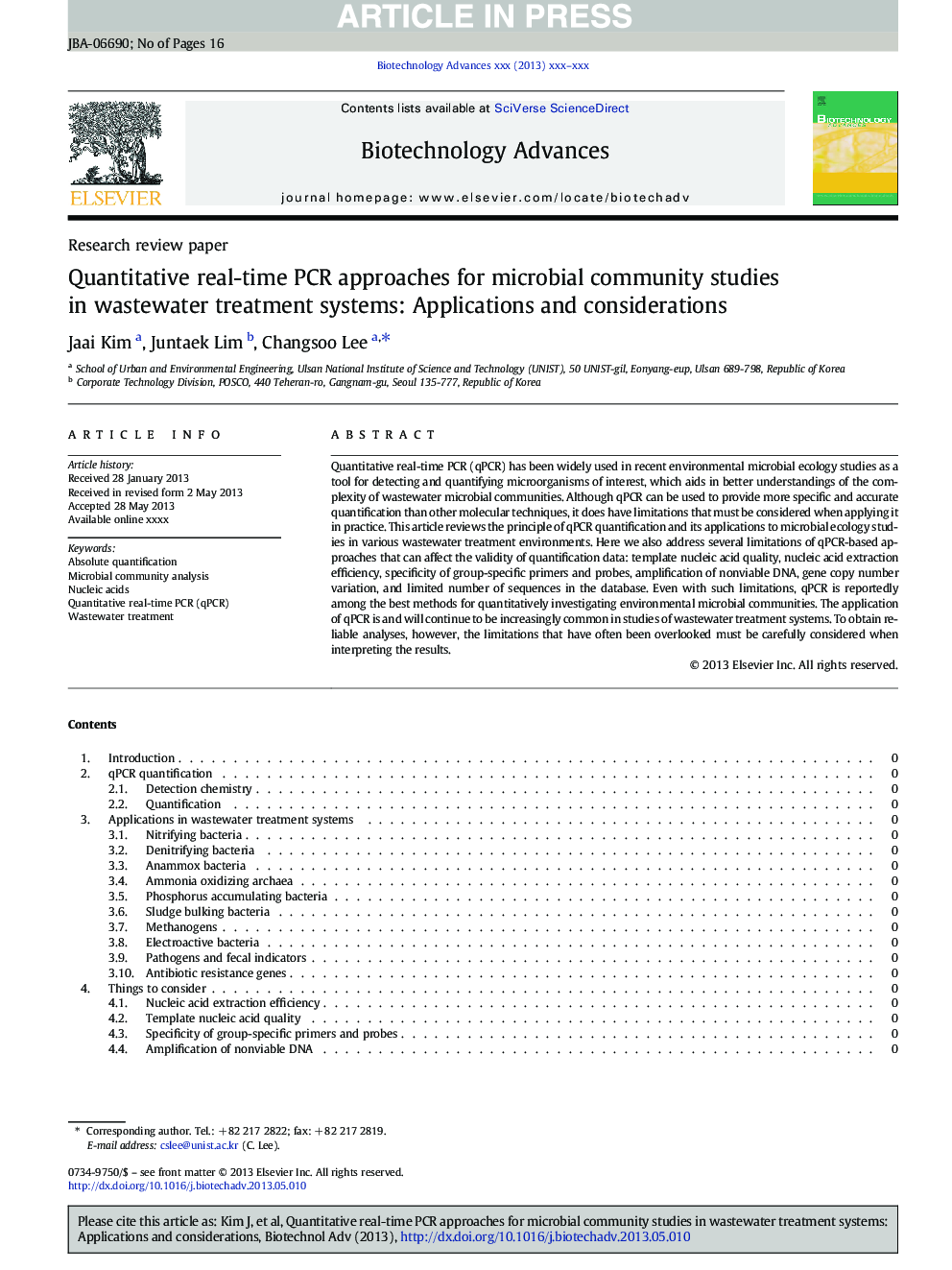| Article ID | Journal | Published Year | Pages | File Type |
|---|---|---|---|---|
| 10231564 | Biotechnology Advances | 2013 | 16 Pages |
Abstract
Quantitative real-time PCR (qPCR) has been widely used in recent environmental microbial ecology studies as a tool for detecting and quantifying microorganisms of interest, which aids in better understandings of the complexity of wastewater microbial communities. Although qPCR can be used to provide more specific and accurate quantification than other molecular techniques, it does have limitations that must be considered when applying it in practice. This article reviews the principle of qPCR quantification and its applications to microbial ecology studies in various wastewater treatment environments. Here we also address several limitations of qPCR-based approaches that can affect the validity of quantification data: template nucleic acid quality, nucleic acid extraction efficiency, specificity of group-specific primers and probes, amplification of nonviable DNA, gene copy number variation, and limited number of sequences in the database. Even with such limitations, qPCR is reportedly among the best methods for quantitatively investigating environmental microbial communities. The application of qPCR is and will continue to be increasingly common in studies of wastewater treatment systems. To obtain reliable analyses, however, the limitations that have often been overlooked must be carefully considered when interpreting the results.
Keywords
Related Topics
Physical Sciences and Engineering
Chemical Engineering
Bioengineering
Authors
Jaai Kim, Juntaek Lim, Changsoo Lee,
